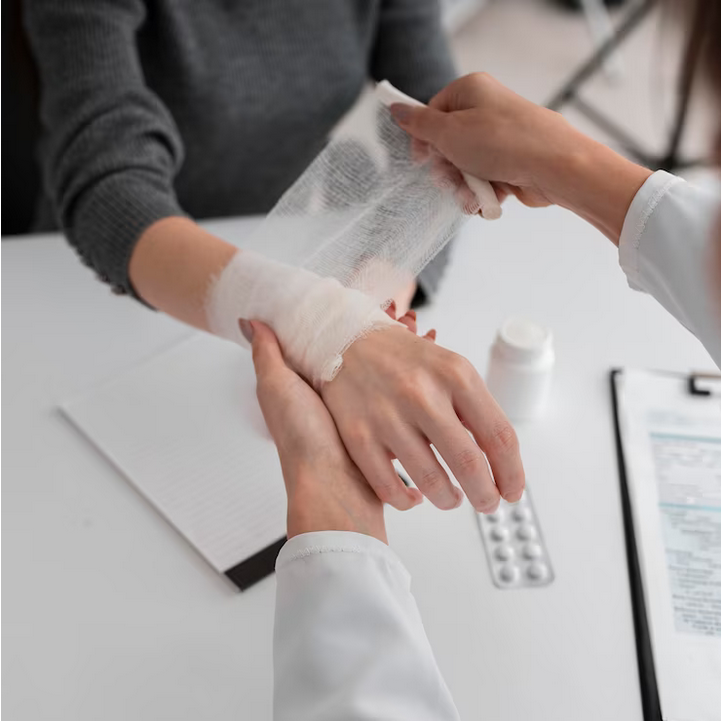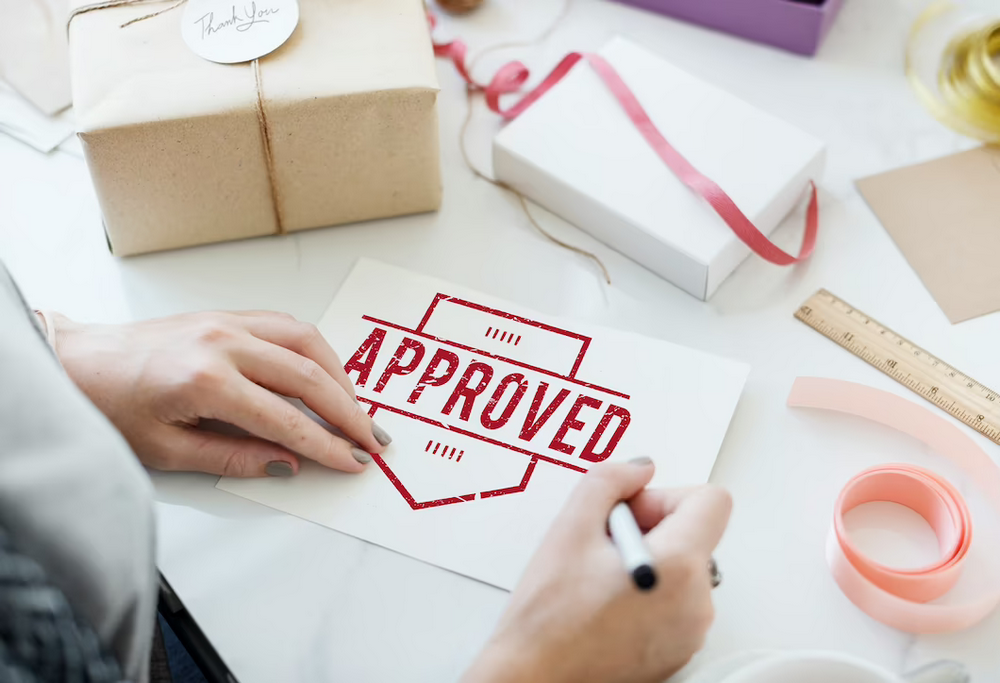Product liability refers to a manufacturer’s legal responsibility for injuries caused by defective products. It is a form of strict liability in which the manufacturer, distributor, or supplier is held liable for any injuries or damages caused by a defective product.
Product liability injuries can range from minor to severe, depending on the type of product and the extent of the injury.
In this section,the types of product liability injuries, the causes of product liability injuries, who is liable for product liability injuries, how to avoid product liability injuries, and what to do if you experience a product liability injury will be discussed.
What is Product Liability?
Product liability is a legal concept in which a manufacturer or seller can be held responsible for any harm caused by a product.
Generally, a manufacturer or seller can be held liable for any physical harm caused by their product, even if they exercised reasonable care during the manufacturing process.
This can include any type of injury caused by a defective product, such as a faulty car part, dangerous medication, or malfunctioning power tool.
In addition to physical harm, product liability can also include any economic losses caused by the product, such as the cost of repairs or medical bills.
The legal doctrine of product liability is based on the idea that manufacturers and sellers have a responsibility to ensure that their products are safe for consumers to use.
Types of Product Liability Injuries
Product liability injuries can be divided into three distinct categories:
Design Defect Injuries occur when a product is not created to the specifications outlined by the manufacturer, resulting in an injury to the user.
Manufacturing Defect Injuries are caused by improper construction or assembly of the product, and can lead to serious harm to the user.
Inadequate Warning or Instruction Injuries refer to when the product fails to provide adequate instructions or warnings for the user, which can result in the user suffering an injury due to improper use of the product.
Design Defect Injuries
Design defects can lead to serious harm, with the potential for long-term financial and physical repercussions.
A design defect is a flaw in the design of a product that renders it dangerous or unfit for its intended use. It is different from a manufacturing defect, which results from flaws in the production process, or from a marketing defect, which can involve inadequate warning labels or improper instructions for use.
Design defects are often highly complex and technical in nature, and may be difficult to identify and prove.
Design defects can often cause serious, life-altering injuries, such as burns, broken bones, or even death. If a product is found to be defectively designed, the manufacturer may be held liable for any resulting injuries.
Generally, the manufacturer must prove that the product was used as intended, and that the design of the product was not unreasonably dangerous. In addition, the injured party must show that the injury was caused by the defective design.

Manufacturing Defect Injuries
Manufacturers have an obligation to ensure the safety of their products and may be held responsible for any harm caused by a manufacturing defect.
A manufacturing defect occurs when a product is not made as intended and causes injury or harm to the user. This could be due to poor quality control, incorrect assembly, or use of defective parts.
Manufacturing defects can be difficult to prove as the product may not have been made to the original specifications or was not tested for safety.
Manufacturers can be held liable for any injuries or harm caused by a manufacturing defect. This is due to the legal principle of strict liability, which holds that a manufacturer can be held liable regardless of their negligence or fault.
This means that the manufacturer is responsible for any injuries caused by a defect in their product, even if the defect was not foreseeable.
In cases involving a manufacturing defect, injured parties may be able to seek compensation from the manufacturer for the physical and emotional harm caused by the defect.
Inadequate Warning or Instruction Injuries
A lack of adequate warning or instruction may lead to an individual suffering harm due to the use of a product. Product liability law dictates that manufacturers have a responsibility to alert consumers of potential dangers associated with their products.
This includes three key areas:
- Clear and comprehensive warnings regarding safe product use
- Instructions on how to use the product safely and appropriately
- Properly labeling and packaging the product so that users can distinguish between different types of products
When manufacturers fail to provide sufficient warning or instruction, they may be held liable for any resulting injuries or damages. This concept of liability is known as ‘failure to warn’ and applies to all types of products, including medical devices, pharmaceuticals, and consumer goods.
When a product label fails to provide appropriate warnings, it can result in severe injury or death for an unsuspecting user. As such, manufacturers must take extra care to ensure their products are adequately labeled and accompanied by appropriate warnings and instructions.
Causes of Product Liability Injuries
Product Liability Injuries can be caused by:
- Negligent design or manufacturing processes, which refer to flaws in the design or manufacture of a product that can cause harm to the user.
- Failure to conduct adequate safety testing, which involves not investing enough time and resources into testing a product before it is sold to consumers.
- Insufficient or misleading product warnings, which involve not providing consumers with warnings that properly detail the risks of using a product, or not providing such warnings at all.
Negligent Design or Manufacturing Processes
Through negligent design or manufacturing processes, a product can be created that poses a risk of harm to those who use it. This type of negligence can include a number of errors, from inadequate testing and design flaws to improper labeling and inadequate instructions.
Inadequate testing can lead to a product being released that is not safe for use, as the manufacturer has not taken the necessary steps to ensure that the product is safe for use. Design flaws can also be a cause of product liability injuries, as the product may have been designed in such a manner as to make it more prone to cause harm. Improper labeling and inadequate instructions can also lead to product liability injuries, as the user may be unaware of the potential risks associated with use or may not be able to properly use the product due to lack of understanding or knowledge.
In addition, manufacturing processes can also be a cause of product liability injuries, as the product may not have been built to the required safety standards or may have been made with faulty parts. This could lead to the product not functioning correctly or as intended, which can create a risk of harm. Furthermore, assembly errors can also lead to product liability injuries, as the product may not have been put together according to the required specifications or may have been assembled incorrectly.
In this case, the product may not be safe for use and could lead to harm.
Failure to Conduct Adequate Safety Testing
Safety testing is an essential part of the product production process, and a failure to conduct adequate testing can result in hazardous products being released to the public. This can lead to a wide range of product liability injuries for consumers, including:
- Injuries or illnesses caused by hazardous materials or faulty design
- Injuries or illnesses caused by incorrect instructions or warnings
- Injuries or illnesses caused by malfunctioning components or improperly assembled parts
- Injuries or illnesses caused by inadequate safety testing
- Psychological injuries caused by fear of using the product due to prior reports of injury or illness
Product manufacturers have a legal responsibility to ensure that their products are safe for consumers to use, and inadequate safety testing can lead to serious consequences for both the manufacturer and the consumer.
If it is determined that the manufacturer failed to conduct proper safety testing, they may be held liable for any product liability injuries that occur.
Insufficient or Misleading Product Warnings
The consequences of inadequate or misleading product warnings can be devastating, leaving consumers with the aftermath of a preventable injury or illness. Companies have a responsibility to provide warnings that are clear, accurate, and easy to understand. Warnings should be prominently displayed and easily accessible to consumers.
| Inadequate Warning | Consumer Injury |
| Misleading Warning | Consumer Illness |
| Unclear Warning | Consumer Misunderstanding |
| Inaccessible Warning | Consumer Ignorance |
| Missing Warning | Consumer Unawareness |
When a warning is inadequate, misleading, unclear, inaccessible, or missing, the company can be held liable for any injuries or illnesses that occur. Consumers have the right to expect that the product they are purchasing meets the safety standards set forth by the company. Companies must take the necessary precautions to ensure that their products are properly identified and that the warnings associated with them are accurate and easily accessible.
Who is Liable for Product Liability Injuries?
Examining responsibility for the consequences of a malfunctioning product can be a complex process. Depending on the situation, there are a variety of parties who may be liable for product liability injuries. These parties can be divided into three categories:
- Manufacturers:
- Product designers
- Product assemblers
- Product manufacturers
- Retailers:
- Wholesalers
- Distributors
- Retailers
- Third Parties:
- Component-part manufacturers
- Testing laboratories
- Advertising agencies
In each case, the party or parties responsible for the defect in the product must be identified and held accountable for any resulting personal injury or property damage.
In many cases, a thorough investigation of the product and its components is necessary to determine the source of the defect and, ultimately, the party or parties responsible for it.
For example, if a consumer product malfunctions, the manufacturer and/or the retailer may be held responsible for any resulting injury or damage. However, if the product was designed by an outside party, then that party might also be held liable. Similarly, if the product was made from low-quality components, the component-part manufacturer may be held liable for the malfunction.
How to Avoid Product Liability Injuries
Product liability injuries are a serious matter that manufacturers and consumers alike should be aware of and take steps to mitigate.
Tips for manufacturers include ensuring that their products are manufactured to the highest standards and that they have appropriate testing and quality control protocols in place.
Consumers should be aware of the potential risks associated with the products they purchase, and practice safe use and storage practices to reduce the likelihood of injury.
Finally, staying informed about product recalls is important for both manufacturers and consumers alike, to ensure that those products that are deemed to be unsafe are removed from circulation.

Tips for Product Manufacturers
By taking preventative steps, product manufacturers can limit their exposure to costly litigation associated with product-related injuries. In order to do so, manufacturers should ensure that their products meet applicable safety standards and are manufactured in accordance with established quality protocols. Additionally, they should provide appropriate warnings that alert consumers of any potential risks associated with using their products.
Product manufacturers should also stay up-to-date on product-related injury cases and consider how those cases may affect their product. They should also review the design and manufacturing processes for their product to identify any potential defects or shortcomings.
Finally, manufacturers should consider implementing additional safety protocols to further protect consumers from any potential risks.
Consumer Awareness and Safe Use Practices
Understanding the safe use practices of products and being aware of potential risks can greatly reduce the risk of product-related incidents.
Consumers should be aware of the potential hazards associated with a product prior to its purchase and use. This includes:
- Reading the product instructions, warnings, and labels carefully
- Refusing to use a product if it appears to be damaged or faulty
- Inspecting the product for defects before and during use
- Knowing the product’s age and expiration date, if applicable
By taking proactive steps such as these, consumers can reduce their risk of experiencing a product-related injury or incident.
Manufacturers should also provide sufficient warning labels and instructions for the safe use of their products. In addition, manufacturers should ensure that their products are safe for use and provide consumers with the necessary safety information in order to help them make informed decisions.
Staying Informed about Product Recalls
The potential consequences of using a faulty or damaged product can be dangerous, making it essential for consumers to stay informed about product recalls. In order to do this, it is important to understand the various ways of staying informed and to take action when necessary.
| Source | Recall Information | Action to Take |
| Manufacturer | Brand name, model, serial number, and other identifying information about a recalled item | Contact the manufacturer for a repair, replacement, or refund |
| Government | Product name, type, and other identifying information about a recalled item | Check the recall information to determine if the item is affected, and follow the instructions on the government website for a remedy |
| Media | General information about a recall | Research further to determine if the item is affected, and take necessary action if it is |
Consumers should also be aware that product recalls may not be reported in the media or on government websites immediately, but may be released months or even years after the product was originally released. Therefore, it is important to stay updated with the latest recall information from the manufacturer and other reliable sources. Additionally, consumers should take the necessary steps if they discover that their product is affected by a recall.
What to Do If You Experience a Product Liability Injury
Suffering an adverse outcome due to a defective product can be a devastating experience, and it is essential to know how to proceed in such a situation. The most important step is to seek medical attention immediately, as any delay may worsen the injury or cause further complications.
In addition, the following should be taken into consideration:
-Gather all the relevant information, such as the name of the product, the manufacturer, and the date and place of purchase.
-Keep the product and the packaging material to use as evidence.
-Preserve any records of the medical care received due to the injury.
-Take photographs or videos of the injury and the product.
-Contact a lawyer and discuss the case with them.
After taking the necessary actions, filing a product liability claim may be the best option. The claim should include the details of the injury, evidence of the product defect, medical records, and other relevant information. This will help to prove that the injury was due to a defective product, and the manufacturer may be held liable.
Conclusion
Product liability injuries can have serious effects on individuals and businesses alike. It is important to be aware of the potential causes and liabilities associated with these types of injuries, as well as how they can be avoided.
By understanding the risks and taking proper precautions, businesses and consumers can work together to ensure that these injuries are kept to a minimum.
Everyone should also be aware of their rights in the event of a product liability injury, and take the necessary steps to seek justice and compensation.
Taking these steps can help to ensure that product liability injuries are avoided and managed appropriately.
In case you suffer an injury as a result of another party’s negligence, it is crucial to have a personal injury lawyer to secure justice for the harm caused. A skilled lawyer will guide you through the intricacies of personal injury law and aid in collecting evidence, establishing liability, and negotiating settlements. With legal representation, your chances of obtaining the rightful compensation significantly increase. Reach out to us at 1800-ASK-GARY for the assistance you require.


